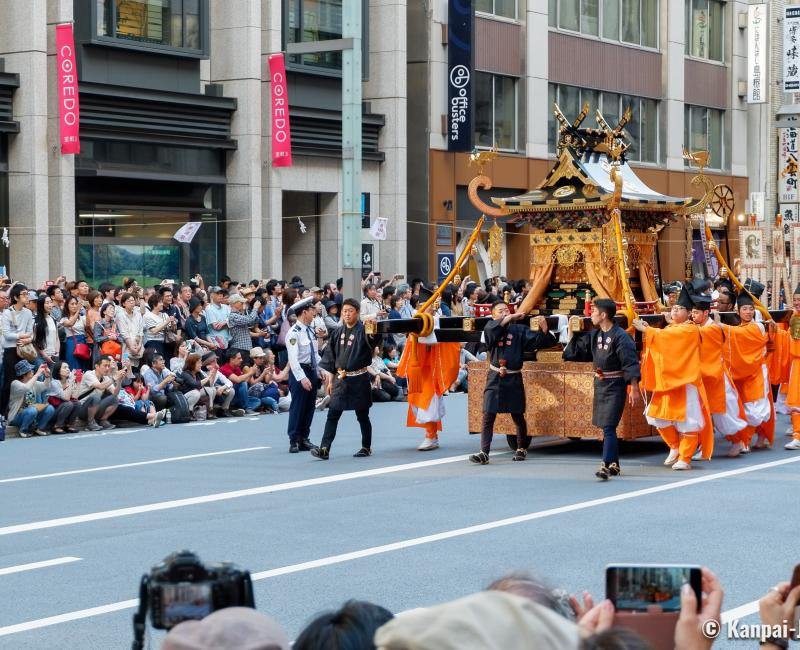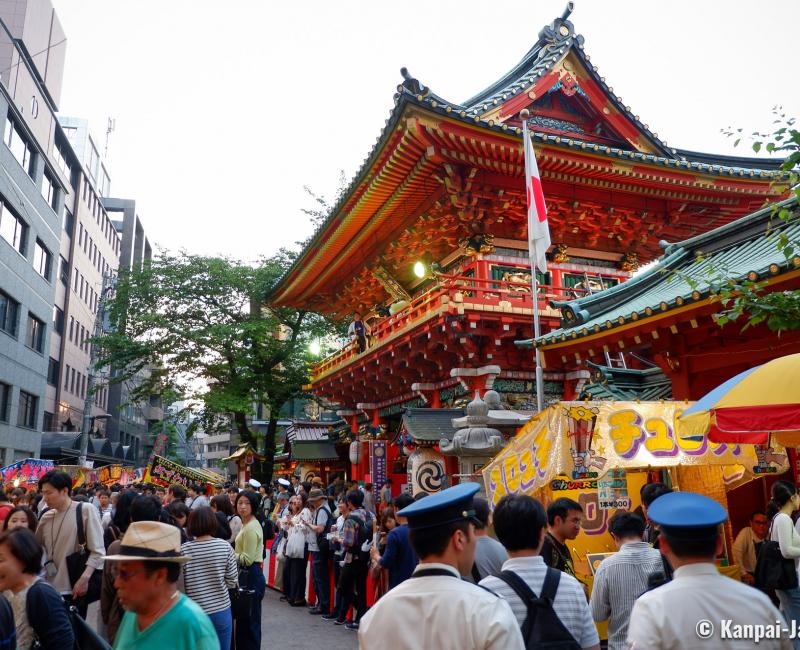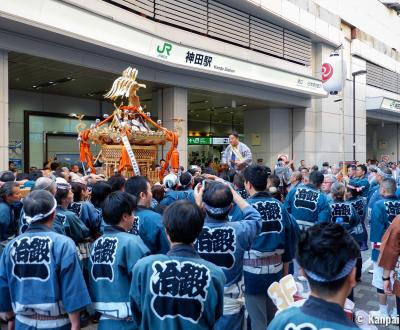Kanda Matsuri
The Great Tokyo Festival Established by Tokugawa Ieyasu
Kanda Matsuri is a Shinto festival taking place in mid-May on odd-numbered years in the center of Tokyo. It is one of the three most important of the capital and of Japan. Processions start from and come back to Kanda Myojin shrine in Chiyoda ward, after a course in neighboring districts such as Akihabara, Nihonbashi and Marunouchi.
Founded in 730, Kanda Myojin shrine is dedicated to two of the Seven Lucky Gods and to Taira no Masakado, a 10th century rebellious feudal lord who was deified after his death. The shrine’s importance grew thanks to Tokugawa Ieyasu (1543-1616), one of the three unifiers of Japan. This warlord had indeed the habit to pray there before decisive battles that lead to his rise in power and to the unification of the country.
Ieyasu won the famous battle of Sekigahara in 1600 and received the title of shogun in 1603, the same year marking the beginning of the Tokugawa shogunate, also known as Edo period (1603-1868). It is a turning point in Japan’s history, as it opens a two and a half centuries of peace and stability, under the reign of the Tokugawas’. All the temporal powers were transferred to the shogun in Edo (Tokyo’s former name), whereas the emperor was confined to the spiritual functions in Kyoto.
A festival to commemorate modern Japan
Kanda Matsuri, whose initial name is Tenka Matsuri (the power’s festival), was born from shogun Tokugawa Ieyasu’s will to celebrate his victories while acknowledging the help and moral support of the shrine to his armies. Kanda Matsuri and its counterpart, Sanno Matsuri, held in June on even-numbered years, were the two only festivals whose processions could parade within the grounds of Edo Castle (now Tokyo Imperial Palace).
Nowadays, celebrations span over a week. Two particularly animated days are organized on the closest weekend to May 15, only on odd-numbered years.

The main procession: Shinkosai
The main procession Shinkosai takes place on Saturday. Three mikoshi portable shrines, each sheltering one of Kanda Myojin’s deities (Daikoku, Ebisu and Taira no Masakado) travel on a thirty kilometers course in Tokyo’s former lower city. The procession starts around 8 a.m. to reach, among other places, Otemachi, near the Imperial Palace where Kanda Myojin’s original site used to be. It continues towards Marunouchi, Nihonbashi and Kanda, and finally Akihabara, before coming back to the shrine around 7 p.m.
Provided arriving early enough, the gathering place in front of Mitsukoshi Department Store on the long Nihonbashi Avenue is an ideal vantage point. The beautiful parade with hundreds of participants arrives around 4:30 p.m. From there are viewable, among other things:
- Mikoshi carried by dancing, jumping and singing men,
- Decorated floats that can have a surprising look, with illustrations of legends or Noh theater plays,
- Cavalry men donning samurai attires, or other participants dressed in traditional clothing of Heian period.
If you still have time, come back to the entrance of Kanda Myojin at the end of the day to watch the return of the floats. The surroundings of the wonderful Zuishin-mon Gate at dusk become especially lively!

The second procession: Mikoshi Miyairi
On Sunday, more than 200 small mikoshi portable shrines come from the neighboring districts: they represent their local divinities who join the celebrations. Their parade starts at 9 a.m. to reach Kanda Myojin. The streets are lively with the cheering and shouts of encouragement of the carriers, men and women all dressed in happi, a traditional cloth only worn during festivals. Even more original: some men wear the fundoshi, the traditional underwear common until World War II, before it was replaced by its Western counterpart.
Note that it is not easy to follow the processions on the two days of the weekend. Of course, car traffic is stopped, but some parts are also forbidden to pedestrians to leave way to the processions. It can be impossible to cross a street for example. The large crowd is also limiting the possibilities to move on, especially at the occasion of specific stopovers. One must be patient and use little tricks to precede the parade so as to better enjoy it.

